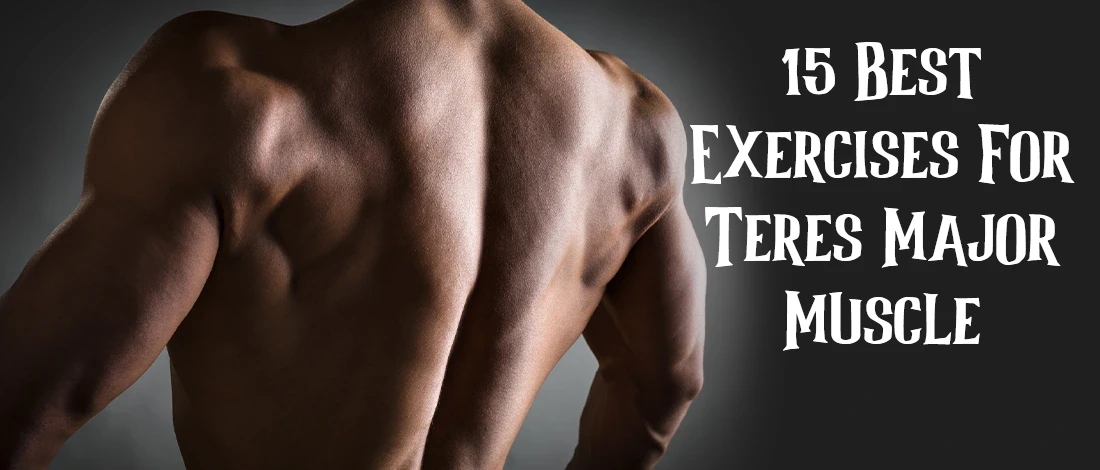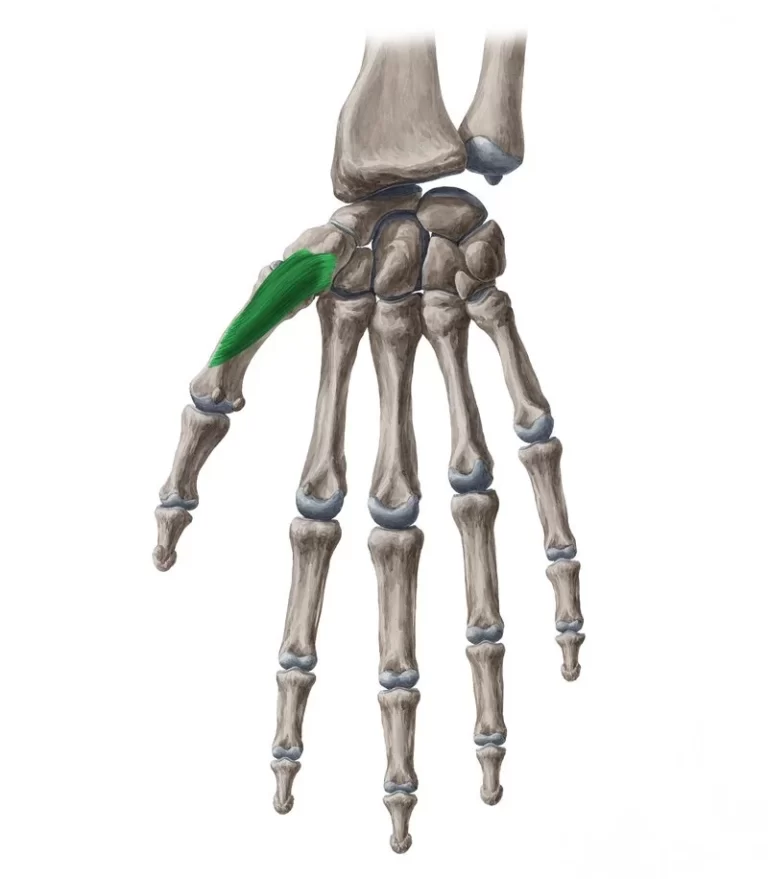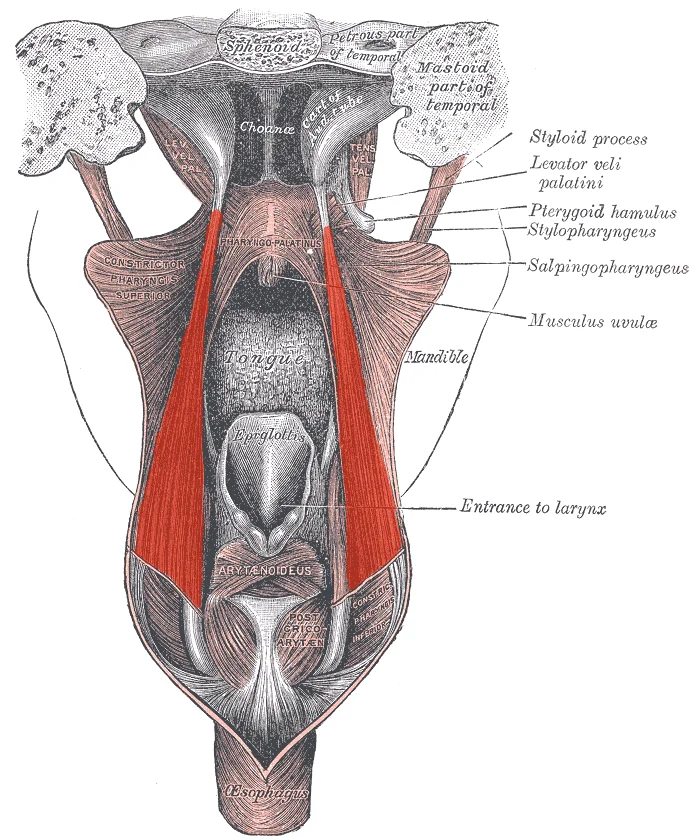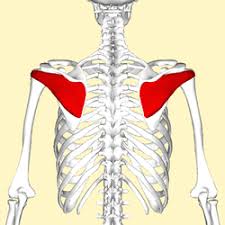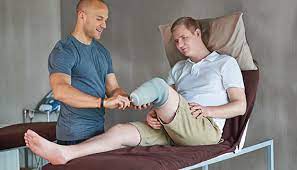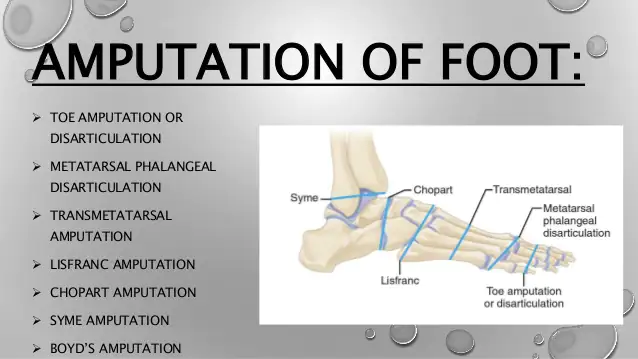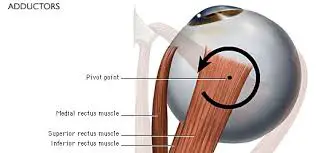15 Best Exercises For Teres Major Muscle
Table of Contents
Introduction
The teres major is a key muscle located in the upper back, originating from the scapula and inserted into the upper part of the humerus. Often referred to as a synergist to the latissimus dorsi, the teres major plays a crucial role in shoulder movement and stability.
Strengthening this muscle is essential for maintaining overall shoulder health and improving functional upper-body strength. In this introduction, we’ll explore some of the best exercises specifically targeting the teres major, helping you develop a well-rounded and robust upper body.
- To achieve a healthy range of motion in your shoulders and avoid problems like bursitis or shoulder impingement syndrome, you need strong teres major muscles.
- Fortunately, you can strengthen this muscle by doing a variety of workouts!
- A little muscle called the teres major (TM) runs along the scapula’s lateral edge.
- It is one of the seven scapulohumeral muscles that help to enable shoulder movement by acting around the glenohumeral joint.
- Because of its complementary activity with the latissimus dorsi, it is frequently referred to as “lat’s little helper”.
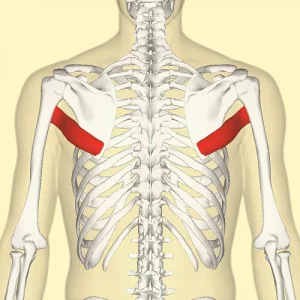
What’s The Difference Between The Teres Major And Teres Minor?
- Despite having the same name, the human body uses the two teres muscles for different purposes.
- This is because of their humerus-based basis.
- The latissimus dorsi and the teres major muscle are connected by a single tendon on the front of the humerus.
- The tuberosity of the humerus head where muscles and connective tissues attach is the basis for the teres minor.
What Is The Teres Major Muscle?
- Major is the larger of the two teres muscles, and its name comes from the Latin word teres, which means “rounded.”
- The latissimus dorsi is beneath this muscle.
- The scapula and humerus are where the teres major muscle is attached.
- Since the teres major does not adhere to the shoulder joint capsule, it is not a component of the rotator cuff muscle, despite what many people believe.
- Fun fact: The late little helper is another name for the teres major.
- Targeting the teres major in your women’s back workout is crucial if you want a sleek back since, when developed, it generates a nice bubble shape.
What Is The Teres Major Function?
- By drawing the humerus’ anterior side towards the trunk, the teres major assists in the internal and medial rotation of the humerus, or upper arm.
- Extending the arm from a flexed position is also beneficial.
- Because it cooperates with the pectoralis major (pecs) and latissimus dorsi (lats) muscles to draw the trunk via adduction when its humeral attachment is stabilized, the teres major is frequently referred to as the ascending muscle.
- Moreover, this muscle stabilizes and supports the lats, particularly during actions like cutting wood.
- Then there’s a major action that is crucial to a lot of arm-swinging actions.
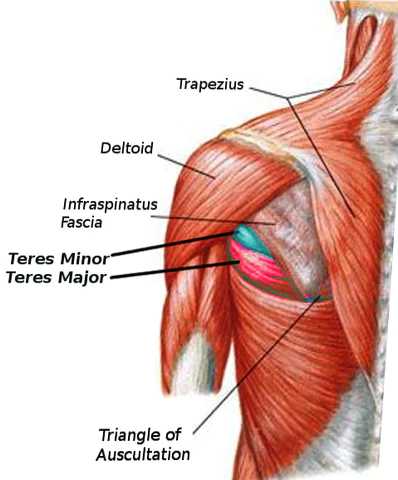
What Is The Minor Muscle?
- Once more, because it is the smaller of the two teres muscles, the term teres means “rounded” and minor.
- The teres minor, one of the four muscles that make up the rotator cuff, is situated adjacent to the triceps brachii, above the teres major, and under the infraspinatus.
What Is The Minor Minor Function?
- To keep the humeral head in the glenoid cavity of the scapula, the teres minor and infraspinatus cooperate.
- In addition, the teres minor action facilitates the adduction and extension of the shoulder, supports external rotation of the shoulder, and helps stabilize the shoulder.
Anatomy
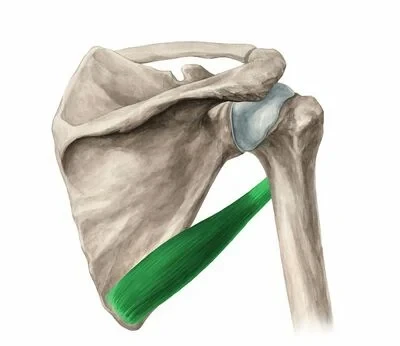
Origin: The scapula’s dorsal surface of the inferior angle
Insertion: The humerus’s medial lip in the intertubercular groove.
- It has to do with the latissimus dorsi muscle, which encircles the teres major’s lower border.
- There is a bursa between the tendon of the latissimus dorsi and the tendon of the teres major.
Innervation: lower subscapular nerve (C5, C6)
Arterial supply: posterior circumflex humeral artery, thoracodorsal branch of the subscapular artery
Function
- Together with the latissimus dorsi (LD), the TM muscle works as a unit to extend, adduct, and internally rotate the shoulder.
- such as When a baseball pitcher throws, their TM and LD muscles are used in the acceleration and follow-through phases of the motion to help the latissimus dorsi during activities like tennis, rock climbing, swimming, wood cutting, and rowing.
Physiotherapy
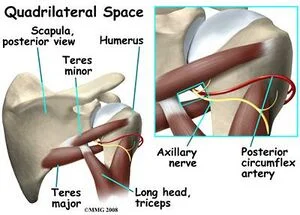
Etiology – Injuries
The development of teres major injuries is linked to falls onto the lateral scapula, sports-related injuries, and impact or stretch injuries to the muscles encountered during auto accidents.
Furthermore, myofascial pain in the teres major muscle may develop as a result of repetitive microtrauma caused by reaching up and behind (such as when removing a briefcase from the rear of an automobile, throwing something overhead, and other sports-related injuries).
Teres Severe injuries cause pain and make it difficult to perform tasks requiring the arm to move backward or sideways.
- Although they are rare, isolated tears of the teres major can happen to pitchers and bowlers in baseball or cricket.
- Sharp pain that suddenly flares up in the shoulder, upper arm, and armpit is the primary sign of a teres major tear.
- This typically occurs when the muscle is not rested upon or treated.
- Typically, the discomfort is dull and gets worse when you move your hands behind your back, like when you reach into your pockets, perform a downward freestyle stroke, pitch in a baseball game, or play tennis.
- Swelling may happen as a result of inflammation in the afflicted muscle area.
- Although it is not visible from the outside, the enlargement is palpable when the area is touched (at the bottom of the scapula).
- Upper limb discomfort and soreness limit the range of motion in those who experience it.
- Another typical indication is a jump sign, which is the involuntary withdrawal of the activated muscle.
- When exercises are performed without an adequate warm-up, terse major strain frequently results.
- With upper crossed syndrome, the teres major is short and hyperactive (UCS).
Palpation
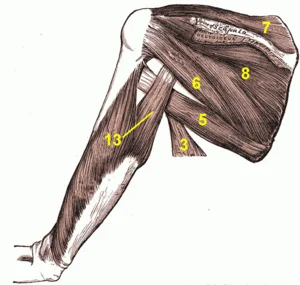
- Grip the latissimus dorsi between your fingers and thumb when the patient is in the prone position and their arm is not resting on the table.
- Place your thumb and fingers medially on the scapula’s lateral border.
- Major muscle fibers in the teres major attach to the lateral border of the scapula and are located medial to the latissimus.
- Track these fibers up to the point where they merge with the latissimus dorsi in the axilla.
Length Tension Testing / Stretching
- Using one hand, flex the patient’s shoulder to 180 degrees while they are supine by holding onto their forearm.
- Using the other hand, stabilize the scapula along the lateral border.
- Rotate the arm externally while keeping the forearm in your hand.
- To detect the degree of muscular tension and barrier, the moving hand and the hand stabilizing the scapula are both utilized.
Treatment
The majority of Teres Major Injury sufferers recover well without requiring surgery. Therapy comprises

- POLICE principle
- Warm-up: Teres A thorough warm-up before exercise frequently cures major injuries sustained during exercises. Warming up aids in de-clumping and releasing the muscles and tissues. Muscles that are flexible can stretch and function more readily.
- Strengthening exercises: focus on strengthening the stability of your shoulders using compound and isolated teres major movements, such as seated rows with resistance bands, lat pulldowns, and chin-ups. Start at a level that doesn’t hurt. Avoid vertical push activities like the overhead press if your range of motion is restricted in the overhead area. Instead, perform push workouts with a high inclination (shoulder press on 60–75° inclination).
- Stretches: For example, the side reach, kneeling, and overhead lat stretches can be performed with the arms raised or on the floor.
- Posture: Refrain from slumping forward and turning your shoulders inward. Take brief breaks from prolonged sitting at least every 30 minutes to avoid becoming too accustomed to the position. Take a stroll or extend your teres major.
- Trigger Point Release: Pain from TrPs in the teres major muscle usually radiates to the posterior shoulder joint, the posterior deltoid area, the long head of the triceps brachii, the dorsal side of the forearm, and infrequently the elbow or scapula.
- Myofascial Release Techniques
Top 15 Teres Major And Teres Minor Strengthening Exercises
To help you strengthen your teres major and minor muscles, we’ve compiled a list of the top 15 exercises.
Because your teres muscles collaborate with other muscle groups, all of these workouts also target different muscles in the back, shoulders, and chest.
The teres major and minor are located in such a way that when you strengthen them, the surrounding muscles will also get stronger.
Dumbbell Pullover
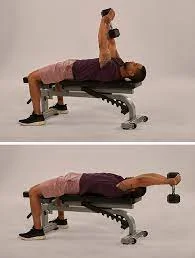
Steps To Follow
- Just your neck and upper back should be supported by the bench when you lie across it.
- Using both hands, hold the dumbbell by making a triangle with them or by holding the inner plate.
- Bend your elbows slightly while you hold the dumbbell straight above your chest.
- As you carefully drop the dumbbell past your face and over your head, make sure to engage your core.
- Return the dumbbell to its initial position by pulling it across your face.
- Repeat the appropriate number of reps.
Cable Straight Arm Pull Down
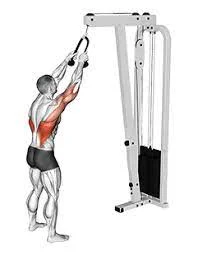
Steps To Follow
- Connect the cable machine to an above-the-head attachment or a wide grip handle.
- Using both hands shoulder-width apart, take an overhand grip on the handle.
- With your elbows slightly bent and your hips slightly forward, hinge forward and depress your shoulder blades while extending your shoulders to draw down on the grip.
- When the handle reaches your thighs, pull down.
- Return to the starting position gradually.
- Continue until you reach the required number of reps.
Inverted Row
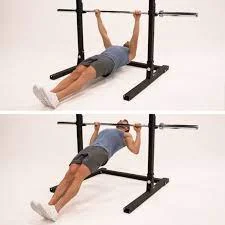
Steps To Follow
- Place the bar just above your arm’s length above the floor.
- Position yourself beneath the bar, extending your legs in front of you.
- Reach up and use both hands to grab the bar in an overhand grip that is wider than shoulder-width apart.
- Make sure your limbs are out straight and your heels are flat on the ground.
- Retract your shoulder blades till your chest touches the bar to pull yourself up.
- Reduce gradually to the beginning point.
- Continue until you reach the required number of reps.
Underhand Yates Row
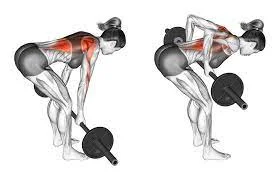
Steps To Follow
- With both hands, take a barbell and hold it at shoulder width using an underhand grip.
- Bend at the knees and turn your hips forward at a 45-degree angle.
- The bar should be over your thighs and your arms should be nearly completely extended.
- Raise the bar to your midsection.
- After a little break at the top, steadily descends back to the beginning position.
- Continue until you reach the required number of reps.
Underhand Grip Lat Pull Down
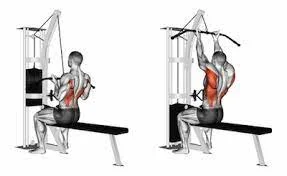
Steps To Follow
- Take a seat facing the cable machine on a bench.
- With both hands, extend your reach and grasp the bar shoulder-width apart using an underhand grip.
- When the bar reaches your chest, pull down on it by bringing your shoulder blades back and down.
- Return to the starting position gradually.
- Continue until you reach the required number of reps.
Lat Pull Downs
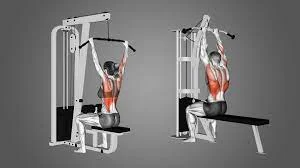
Steps To Follow
- Take a seat facing the cable machine on a bench.
- Grasp the bar with both hands in an overhand grip, a little wider than shoulder-width apart, as you reach up.
- When the bar reaches your chest, pull down on it by bringing your shoulder blades back and down.
- Return to the starting position gradually.
- Continue until you reach the required number of reps.
Pull Ups
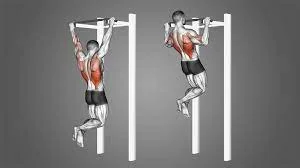
Steps To Follow
- Using an overhand grip, grasp the bar with your hands shoulder-width apart.
- Start with your arms fully extended, then raise your chest as high as you can towards the bar.
- Take a quick hold at the top before stepping back to the beginning.
- Continue until you reach the required number of reps.
Chin Ups
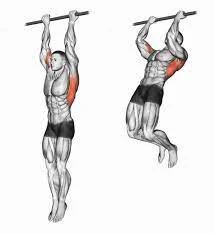
Steps To Follow
- Grasp the bar using an underhand grip with your hands shoulder-width apart.
- Start with your arms fully extended, then raise your chest as high as you can to the bar.
- Take a quick hold at the top before stepping back to the beginning.
- Continue until you reach the required number of reps.
Single Arm Dumbbell Row
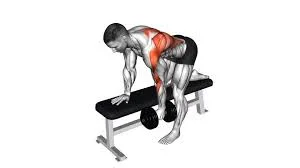
Steps To Follow
- Place your right knee and right hand beneath your shoulder on a bench and use your right hand to grab a dumbbell in a neutral grip.
- With your left arm extended straight beneath your left shoulder, hold the dumbbell.
- When the dumbbell is close to your hip, pull it upward while bending at the elbow and keeping your arm close to your body.
- Reduce gradually to the beginning point.
- Continue until you reach the required number of reps.
Seated Cable Rows
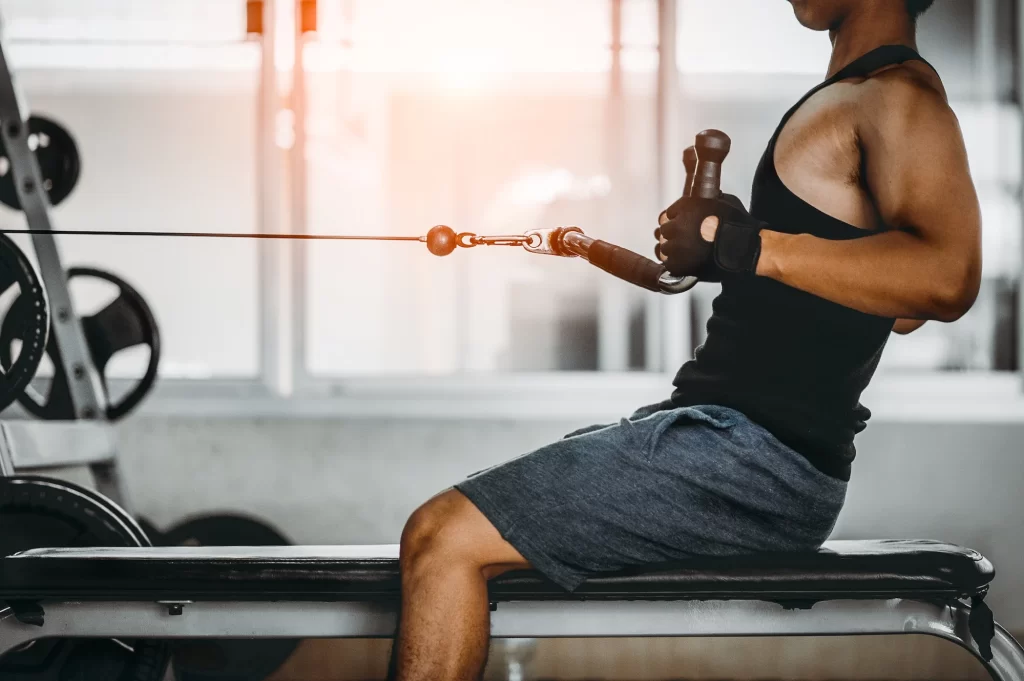
Steps To Follow
- Bending at the knees, take a seat on a bench and reach forward to grasp the triangle handle.
- Squeeze your shoulder blades together and maintain your back straight as you pull the handle back towards your navel.
- Return to the starting position gradually.
- Continue until you reach the required number of reps.
High Cable Reverse Crossover Fly
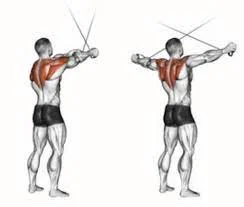
Steps To Follow
- Start the cable machine with both grips at head height.
- Place yourself facing the two-pulley machine’s center.
- Grasp the handles with an overhand hold using both hands as you reach up and across your body (or grab the cables)
- Until your arms are parallel to your back, as far as possible, pull your elbows down, out, and back.
- Return to the starting position gradually.
- Continue until you reach the required number of reps.
Cable Supine Reverse Fly

Steps To Follow
- Place a bench in the middle of two pulleys to begin.
- Reach across your body and use an overhand hold to grab both grips (the cable).
- With your elbows slightly bent and your arms folded across your chest, take a seat on the bench.
- Maintaining your arms perpendicular to your torso, pull your arms down to the sides until your elbow is level with your shoulders.
- Return to the starting position gradually.
- Continue until you reach the required number of reps.
Dumbbell Reverse Fly
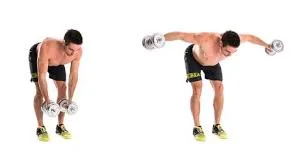
Steps To Follow
- Use both hands to hold the dumbbells in a neutral grip.
- After that, pivot at the hips to bring your body nearly parallel to the ground.
- Dumbbells should be pulled up and back until your elbows are level with your shoulders, starting with your arms hanging down from your shoulders.
- Reduce gradually to the beginning point.
- Continue until you reach the required number of reps.
Band Pull Aparts
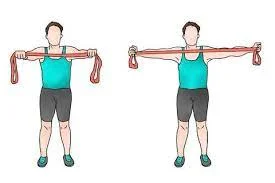
Steps To Follow
- Put your feet shoulder-width apart and stand upright.
- Using an overhand grip, take hold of the band near its ends.
- Raise your arms in front of you to shoulder level.
- Apply pressure with your shoulder blades together to separate the band.
- Return to the starting position gradually.
- Continue until you reach the required number of reps.
Face Pulls
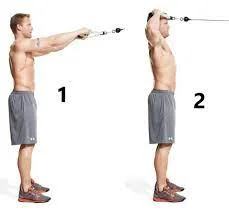
Steps To Follow
- Place the cable at your head’s height.
- Use an overhand grip to seize the rope or handles.
- As you draw back until your hands are parallel to your face, keep your elbows below your shoulders.
- Return to the starting position gradually.
- Continue until you reach the required number of reps.
Teres Major Pain
- A multitude of activities or repetitive actions have the potential to induce major pain.
- The teres major can become painful with certain repetitive motions, such as using a computer mouse for hours on end while keeping your arm at your side and twisting your hand and arm slightly inward.
- The teres major might also shorten due to other activities like prolonged writing sessions or unbalanced training.
- The humerus’ head may then be inappropriately pulled into its socket by the spastic teres major.
- This may result in a number of issues, such as the shoulder joint deteriorating and additional strain on other muscles.
- Reaching over shoulder level can occasionally cause people to become aware of the severe pain.
- Pain in the middle back, shoulders, and neck may result from shortened teres major muscles.
- Frozen shoulder syndrome and teres major trigger points are often associated.
How to fix Teres Major Pain
- It’s critical to learn how to relieve any severe discomfort or pain you may be feeling before it worsens and causes more serious problems.
- Myofascial release, stretching, and strengthening are three essential components of maintaining pain-free muscles.
Teres Major Myofascial Release
- Trigger point therapy or myofascial release therapy can work wonders for major muscle pain. To help release your teres major muscle, you’ll need a lacrosse (massage) ball or any other kind of semi-hard ball.
Standing/Lying Teres Major Release
- Next to your armpit, place the ball on the outside of your shoulder blade, directly below your rotator cuff.
- On the ball, sag against the wall or floor.
- Here, you can move your shoulders in the following ways:
- Pull your active side arm across your body, cross your arms in front of you at shoulder level, and repeat.
- Raise your hand as though performing an overhead press.
Teres Major Stretches
- Any well-rounded exercise program should include stretching, especially for the teres major muscle, which can cause pain in many people due to overtightness.
- These three simple stretches for your teres major can help to restore blood flow to the area.
- Several times a week, especially after any back exercises, consider performing these stretches if you’re suffering from pain from tight teres major muscles.
Dead Hang
- Grasp an overhand hold with both hands to grab a pull-up bar.
- For 20 seconds, hang
Overhead Side stretch
- Place your head on a pillow while lying on your right side on a bed or bench.
- Extend your left arm above your head.
- With your palm facing the ground, your left arm should be resting on your left ear.
- Hold on for two minutes.
- Change positions
Standing Elbow Wall Stretch
- Raise your left arm above your head and place it behind your upper back by bending it at the elbow.
- Bend left elbow against the wall.
- Face down, incline it towards your armpit.
- Hold on for two minutes.
- Change Sides
Teres Minor Pain
- Tendinitis is the term for the condition where the teres minor tendon, which is a part of the rotator cuff, becomes inflamed or irritated.
- This is typically an external injury brought on by repeatedly performing overhead motions.
- When lifting their arm over their head, people will experience pain and possibly hear a clicking sound.
- Myofascial release therapy or trigger point therapy, ice, and rest are some of the treatments for teres minor pain.
- It’s also critical to strengthen and stretch in order to reduce pressure.
- Knowing the extent of your teres minor pain is crucial to avoid aggravating the situation.
- To find out if you have any tears in your teres minor muscle, use this particular test.
Hornblower’s Sign aka (Teres Minor Test)
- Start with your elbows bent 90 degrees and your arms in the scapular plane, or up to your sides at shoulder level.
- Resistance to external rotation will be applied by a medical professional or technician.
- The individual will be instructed to make a “field goal sign” with their raised hands.
- The histology suggests that there may be a tear in the teres minor if the patient is unable to externally rotate their shoulder.
How to fix teres minor pain
- When trying to raise your arms above your head, even very slight pain might be very annoying.
- The same recommendations from the teres major protocol trigger point therapy, teres minor stretching, and strengthening should be followed to reduce teres minor pain.
- If the discomfort is mild, this should help ease the tightness and agony.
- You should consult a physician to determine whether you have a tear in the teres minor or infraspinatus muscle if you are experiencing excruciating pain and are unable to move your arm above your head at all.
Teres Minor Trigger Point Release
- Once more, you’ll need a semi-rigid ball, such as a massage ball, to aid apply pressure to the uncomfortable location.
- Assume a side stance.
- Position the ball at your armpit on the outside of your shoulder blade.
- Rest your elbow on the outstretched arm that is perpendicular to your shoulder.
- With your elbow bent at a ninety-degree angle, raise your hand towards the ceiling.
- With your elbow bent 90 degrees and your hand on the floor in front of your chest, use your other hand to support your torso.
- Make an arm wrestling motion with your active arm by moving it back and forth.
- Perform this for a duration of 20-30 seconds.
- Change positions
Teres Minor Stretches
Crossbody Stretch
- With your feet shoulder-width apart, stand tall and extend your arms over your body in a hugging motion, tucking your left arm beneath your right.
- Pull across your body with your right hand covering your left triceps.
- 30 seconds of holding
- Change positions
Winged Door Stretch
- With the top of your left hand resting against your midback, bend your left arm at the elbow and fold it behind your back.
- Press your elbow on the door frame or post while maintaining your forearm parallel to the floor.
- 30 seconds of holding
- Change positions
Sleeper’s Stretch
- Place your head on a pillow and lie on the floor or bed with your left shoulder blade rolled up at a 30-degree angle.
- When your left elbow is parallel to your chest and your triceps are in touch with the floor, begin with your arm out to your side at a 90-degree angle.
- Gently apply pressure on your left wrist while reaching across your body with your right hand.
- 30 seconds of holding
- Change positions
Conclusion
Incorporating teres major strengthening and stretching exercises into your workout regimen on a regular basis will assist increase upper body strength and flexibility, preventing injuries, and improving shoulder stability.
As with any training regimen, it’s critical to customize it to your unique level of fitness and speak with a healthcare physician or fitness expert if you have any questions or pre-existing medical conditions. As you work out, keep in mind to increase gradually and pay attention to your body’s feedback.
FAQ
One of the best workouts for building the strength of your teres major muscles is the lateral rise. Try this out: Hold a dumbbell in each hand, palms facing inward (towards each other) while standing with your feet hip-width apart. Raise your arms to shoulder height, keeping your upper arms parallel to the ground and your elbows 90 degrees bent.
A little muscle called the teres major (TM) runs along the scapula’s lateral edge. It is one of the seven scapulohumeral muscles that help to enable shoulder movement by acting around the glenohumeral joint. Because of its complementary activity with the latissimus dorsi, it is frequently referred to as “lat’s little helper”.
Uni-lateral bent-over dumbbell row
This exercise is great for working the Teres Major and Minor muscles. Just make sure to maintain your back straight and your shoulders back while planting your feet on either side of a bench and resting one hand on it.
The adduction of the arm is the function of the teres major. Additionally, it cooperates with the latissimus dorsi to rotate the humerus internally at the shoulder joint and extend the shoulder.
The Teres Major is a butcher’s cut taken from the cattle’s shoulder. The animal’s vigorous life on pasture develops the muscles surrounding this tiny bit of flesh, which gives the Teres Major its wonderful flavor.
One rather significant muscle to work on is the teres major. The arm’s internal rotator and adductor are the teres major. As you accelerate using your mechanics to create velocity on the ball, guess what happens to your arm? Yes, you should internally rotate and extend your arm!
References
- Teres Major. (n.d.). Physiopedia. https://www.physio-pedia.com/Teres_Major
- Set, S. F. (2023, March 3). Top 15 Strengthening Exercises For Teres Major And Teres Minor. SET FOR SET. https://www.setforset.com/blogs/news/teres-major-teres-minor-exercises

